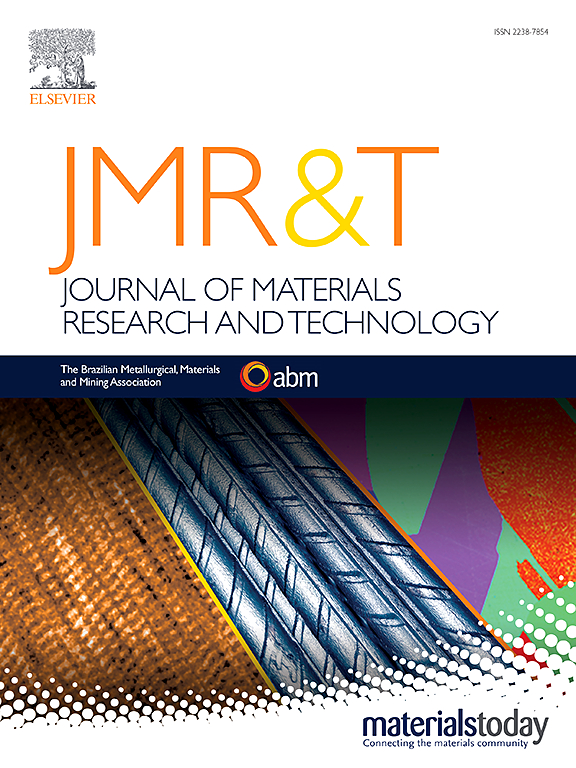Multiscale insights into temperature effects on the sliding wear of a martensitic stainless steel
IF 6.6
2区 材料科学
Q1 MATERIALS SCIENCE, MULTIDISCIPLINARY
Journal of Materials Research and Technology-Jmr&t
Pub Date : 2025-06-14
DOI:10.1016/j.jmrt.2025.06.102
引用次数: 0
Abstract
The sliding wear behavior of a high-strength martensitic stainless steel (6Cr15Mo4VN/6YC7), commonly used in high-temperature components such as control rod drive mechanisms (CRDM) in nuclear reactors, was systematically investigated at varying temperatures (room temperature, 100 °C, and 300 °C) to assess its tribological performance by multiscale characterization. The effects of temperature on wear resistance, microstructural changes, and wear mechanisms were evaluated through measurements of coefficient of friction (COF), wear rate, wear scar morphology, and oxide layer characteristics. The results show a slight decrease in hardness with increasing temperature, but a significant deterioration in wear resistance. An anomalous peak in wear rate and volume occurred at 100 °C, attributed to matrix softening and enhanced plastic deformation, with oxidative wear dominating due to severe oxide layer delamination. At room temperature, abrasive wear with surface craters was observed. At 300 °C, fatigue wear became prominent, characterized by crack formation and spalling. Oxide layers formed at all temperatures, playing a dual role as both protective barriers and sources of wear debris.
温度对马氏体不锈钢滑动磨损影响的多尺度研究
采用多尺度表征方法,系统研究了用于核反应堆控制棒驱动机构(CRDM)等高温部件的高强度马氏体不锈钢(6Cr15Mo4VN/6YC7)在不同温度(室温、100℃和300℃)下的滑动磨损行为,以评估其摩擦学性能。通过测量摩擦系数(COF)、磨损率、磨损疤痕形貌和氧化层特征来评估温度对耐磨性、微观组织变化和磨损机制的影响。结果表明,随着温度的升高,硬度略有下降,但耐磨性明显下降。在100°C时,由于基体软化和塑性变形增强,磨损率和体积出现异常峰值,氧化磨损主要是由于严重的氧化层脱层。在室温下,观察到表面出现磨粒磨损。在300℃时,疲劳磨损明显,主要表现为裂纹形成和剥落。氧化层在各种温度下形成,起到保护屏障和磨损碎片来源的双重作用。
本文章由计算机程序翻译,如有差异,请以英文原文为准。
求助全文
约1分钟内获得全文
求助全文
来源期刊

Journal of Materials Research and Technology-Jmr&t
Materials Science-Metals and Alloys
CiteScore
8.80
自引率
9.40%
发文量
1877
审稿时长
35 days
期刊介绍:
The Journal of Materials Research and Technology is a publication of ABM - Brazilian Metallurgical, Materials and Mining Association - and publishes four issues per year also with a free version online (www.jmrt.com.br). The journal provides an international medium for the publication of theoretical and experimental studies related to Metallurgy, Materials and Minerals research and technology. Appropriate submissions to the Journal of Materials Research and Technology should include scientific and/or engineering factors which affect processes and products in the Metallurgy, Materials and Mining areas.
 求助内容:
求助内容: 应助结果提醒方式:
应助结果提醒方式:


